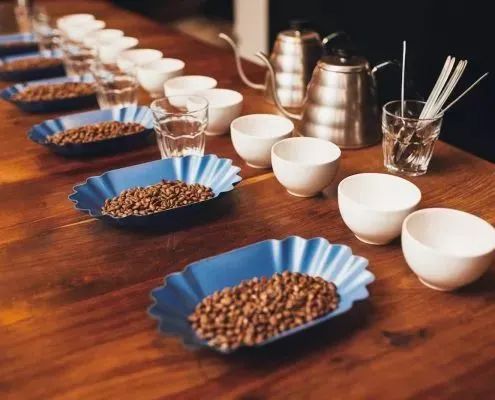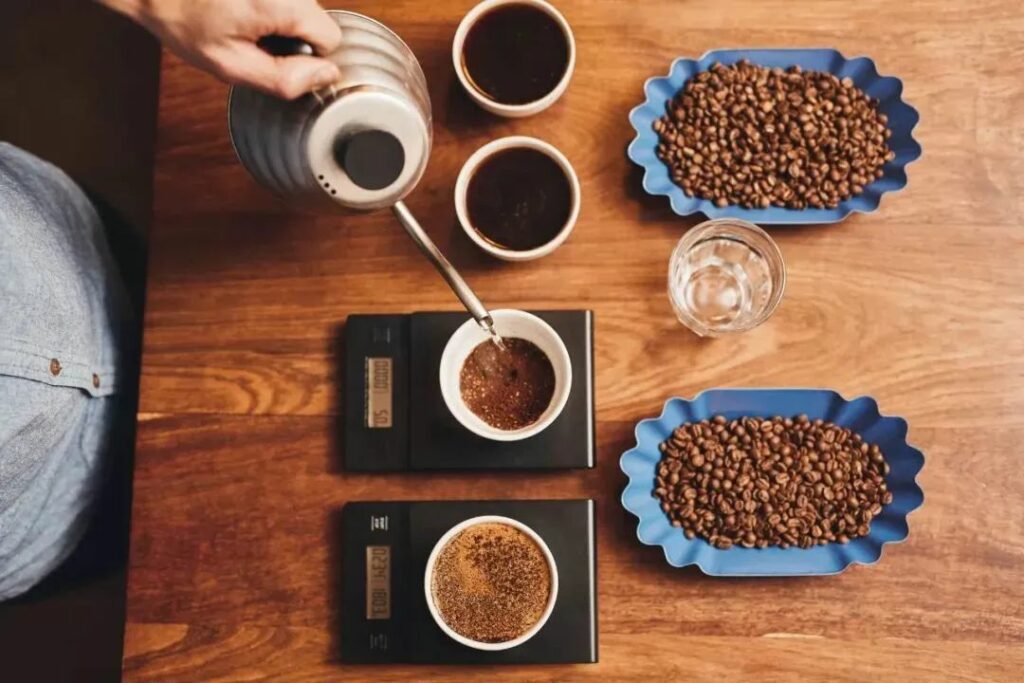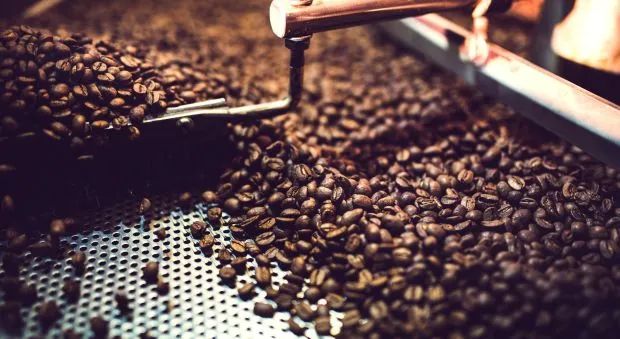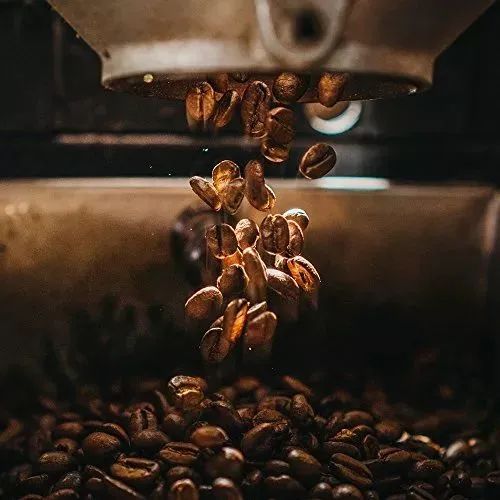
În zilele noastre, cafenelele subliniază adesea că sunt “boutique coffee”. And more than 90% of stores choose to use light to medium roast to interpret the flavor of raw coffee beans, why is this?
Fine coffee has many claims, but its core pursuit is only one thing – “terroir”. Because of the demand for such an original and detailed flavor presentation, “light roast”, a roast level has become popular.
În gradul de prăjire ușor-mediu, cafeaua în sine “terroir” is most easily expressed, bright and lively acidic fruit tones are mostly the flavor that this roast degree wants to present, with hand-pouring, siphoning, Aloha pressure, and other “black” coffee extraction methods, is the most in line with The third wave of the fine coffee core concept of the practice.
Cafeaua ușor prăjită conține și mai mult acid clorogenic. Multe rapoarte de cercetare a cafelei indică faptul că acest ingredient are ca efect creșterea colesterolului HDL și protecția ficatului, încetinirea aterosclerozei și alte efecte, odată cu creșterea dietei naturale în ultimii ani, cafeaua neagră de tip boutique este la fel de bună.

În ceea ce privește extracția, deoarece pereții celulari ai cafelei prăjite ușor sunt mai puțin deteriorați, putem folosi “violent” techniques in extraction, which is okay. That is fine grinding (fine sugar size), high water temperature (about 88 – 92 degrees), high water flow stirring (hand brewing pot height, shaking pot pressure, etc.), and high water to powder ratio (about 1:13.33 – 1:16.67).
Of course, this is a rather general statement. Because everyone’s preferred flavor is different, of course, the right approach is different for each person.
Prăjirea ușoară este atât de populară în lumea cafelei domestice, încât mulți entuziaști pot clătina din cap și ofta când văd cafea întunecată prăjită: “herbal”. They even think that “only poorer beans use deep roasting techniques to disguise unpleasant flavors” and that “deep-roasted beans are unhealthy for the human body.” ……

De fapt, o astfel de idee este greșită, cafeaua fină nu poate fi prăjită în adâncime. De exemplu, de ce Manteanin și Kenya AA tind să ia o prăjire mai adâncă în trecut?
Motivul principal este din cauza originii și a metodei de prelucrare, ceea ce face ca aceste două boabe să aibă o aciditate puternică, în timp ce prăjirea profundă joacă un rol important în încetinirea stimulării acidității pe limba umană, transformând-o în merit dulce și moale.
În cea mai mare parte, ne gândim la friptura întunecată ca fiind arsă și afumată, în principal pentru că felul în care gestionăm friptura întunecată este “high heat and quick fry”, while Japanese roast insists on “low heat and slow roast”. So in the same deep roast, the Japanese method is relatively easy to leave more of the sweetness and fullness of the coffee.

So, is it true that darker roasts don’t use good beans because they all taste the same when baked anyway?
Of course not! If you’ve ever had the pleasure of drinking a very dark roast of a boutique grade coffee bean in an old Japanese tea store, versus a very dark roast of an unusual batch of coffee beans, you’ll notice a significant difference in the sweetness, aroma, and layers between the two.
It is definitely not the case that any roaster or any raw bean will taste the same – it depends on the roaster’s skill and the quality of the raw beans.

Cu siguranță nici fasolea prăjită la culoare nu este nesănătoasă. Atâta timp cât sunt fasolea “properly and skillfully” dark roasted, the effects of coking substances on the human body can be largely avoided. Dark roasted coffee beans also degrade fenugreek, producing more nicotinic acid (commonly known as vitamin B3), which is also a beneficial ingredient for the body.
Spre deosebire de fripturile mai ușoare, fripturile mai închise oferă aroma și dulceața din moleculele relativ mari de “brown pigment” and therefore require a relatively longer extraction time. But also because of the ease of extraction, it is necessary to “minimize disturbance”, in other words, “treat the coffee powder as gently as possible”, and fill the water slowly in order to achieve these requirements at the same time.
Finally, don’t make the mistake of roasting a dark roast coffee just right!
Dacă aveți o altă părere despre acest articol, nu ezitați să lăsați un comentariu.
Despre AFPAK
AFPAK cercetează proiectează și produce mașini și echipamente de ambalare a capsulelor de cafea. De peste 12 ani, AFPAK sa extins la peste trei fabrici care se ocupă de umplerea capsulelor de cafea, ambalarea capsulelor de cafea și capsulele goale, printre altele.
Contact media:
Persoana de contact: Jeff Fang (Director General)
E-mail:info@afpak.co
Tel: +86-1561-8866-167
Site-uri web: https://afpakmachine.com/ https://www.nespressofilling.com/ https://www.kcupfilling.com/
